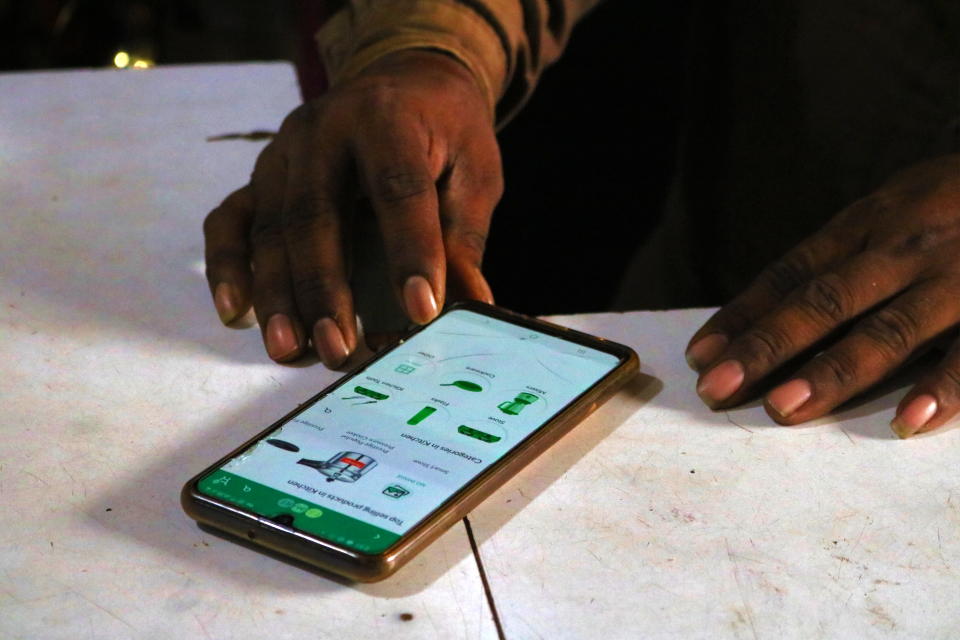Top three benefits:
- Can be applied to both B2B and B2C business models, with the former being more common to date.
- Give customers access to a wider variety of products and the chance to browse and buy products at home and at their time of convenience.
- Combat supply chain challenges and reduce costs of managing sales teams in the field.
Top three challenges:
- Not all customers have internet-enabled devices.
- Gaining consumer trust might require face-to-face interactions and product demos.
- Mobile money and other digital payment solutions might not be widespread yet.

Photo credit: Essmart
Trailblazers:
- Econome (GDC member) & Sevi are past GDC Innovation Challenge winners that piloted a simple e-commerce app for sales agents to support customers to sign up for group purchases (read more)
- Essmart (GDC member) enables rural shop owners in India to stock from Essmart’s curated digital catalogue. So far, they have sold almost 300,000 products in this way.
- Jumia offers a wide selection of products to more than eight million active consumers across Africa. In Ivory Coast, Jumia expanded across secondary cities, adding products for women farmers (read more).
- Copia has served almost two million customers to date, including the low-income population. Besides buying products directly online, customers can purchase through one of the 50,000 digital-enabled Copia agents across Kenya.
- Let us know who else should be on this list
Resources:
- Learn from leading companies on how to make e-commerce more inclusive in this GDC webinar (October 12th 2023).
- UNCTAD eTrade for all offers courses and opportunities for small businesses wanting to start with digital commerce.
- GSMA’s upcoming research on e-commerce adoption in Africa will feature a survey of 1,500 MSMEs, to understand their pathways to digital commerce, and the challenges they are experiencing.
